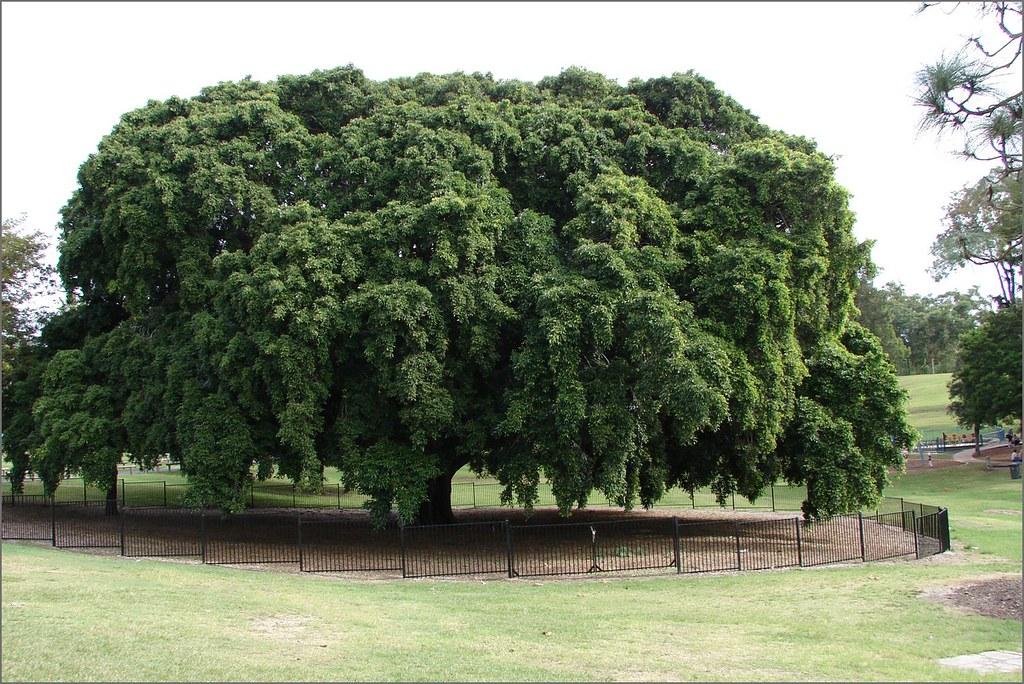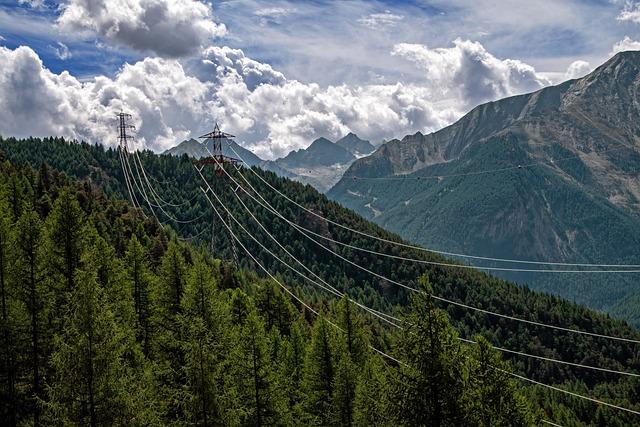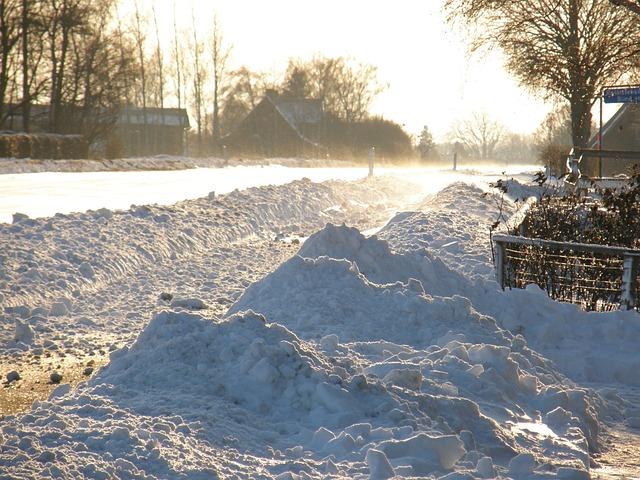Tree pruning is an essential regimen in maintaining the health and aesthetic appeal of our precious green giants. With a meticulous approach and a keen understanding of tree biology, this practice aims to shape, remove dead or diseased foliage, and encourage vigorous growth. Whether you are a seasoned gardener seeking to perfect your pruning skills or a nature enthusiast curious about the art of tree care, this article serves as a comprehensive guide on tree pruning techniques, considerations, and the consequential benefits for both the tree and its environment. Set aside preconceived notions and let’s delve into the neutral territory of this informative exploration.
Table of Contents
- Introduction to
- Benefits of for Health and Safety
- Understanding the Different Techniques
- When to Prune Trees: Seasonal Considerations
- Essential Tools and Equipment for Effective
- Step-by-Step Guide for Proper Techniques
- Common Mistakes to Avoid When Pruning Trees
- Important Safety Measures to Follow During
- Q&A
- Conclusion

Introduction to
Tree pruning involves strategically trimming and removing branches or parts of a tree to promote its health, enhance its appearance, and ensure safety. It is an essential practice for maintaining the overall well-being of trees in both residential and commercial landscapes. Pruning plays a crucial role in shaping trees, controlling their growth, and preventing potential hazards such as falling branches.
One of the primary goals of tree pruning is to improve the tree’s structure and form. By removing dead, damaged, or diseased branches, we can prevent further decay and reduce the risk of pests or diseases spreading throughout the tree. Additionally, selective pruning can also help in maintaining the tree’s natural shape, ensuring proper growth, and enhancing its aesthetic appeal.
- Enhances tree health and longevity
- Reduces the risk of falling branches or hazards
- Promotes proper growth and structure
- Prevents pests and diseases from spreading
When it comes to pruning, it is important to understand the specific needs of each tree species. Proper timing, techniques, and equipment are critical factors to consider. Hiring professional arborists who have the expertise and knowledge in tree pruning is highly recommended to ensure optimal results and prevent any potential damages to the trees.
In conclusion, tree pruning is a necessary practice that helps maintain the health, appearance, and safety of trees. By removing dead or damaged branches and shaping the tree’s structure, pruning can significantly contribute to the overall well-being and longevity of trees in any landscape or environment.
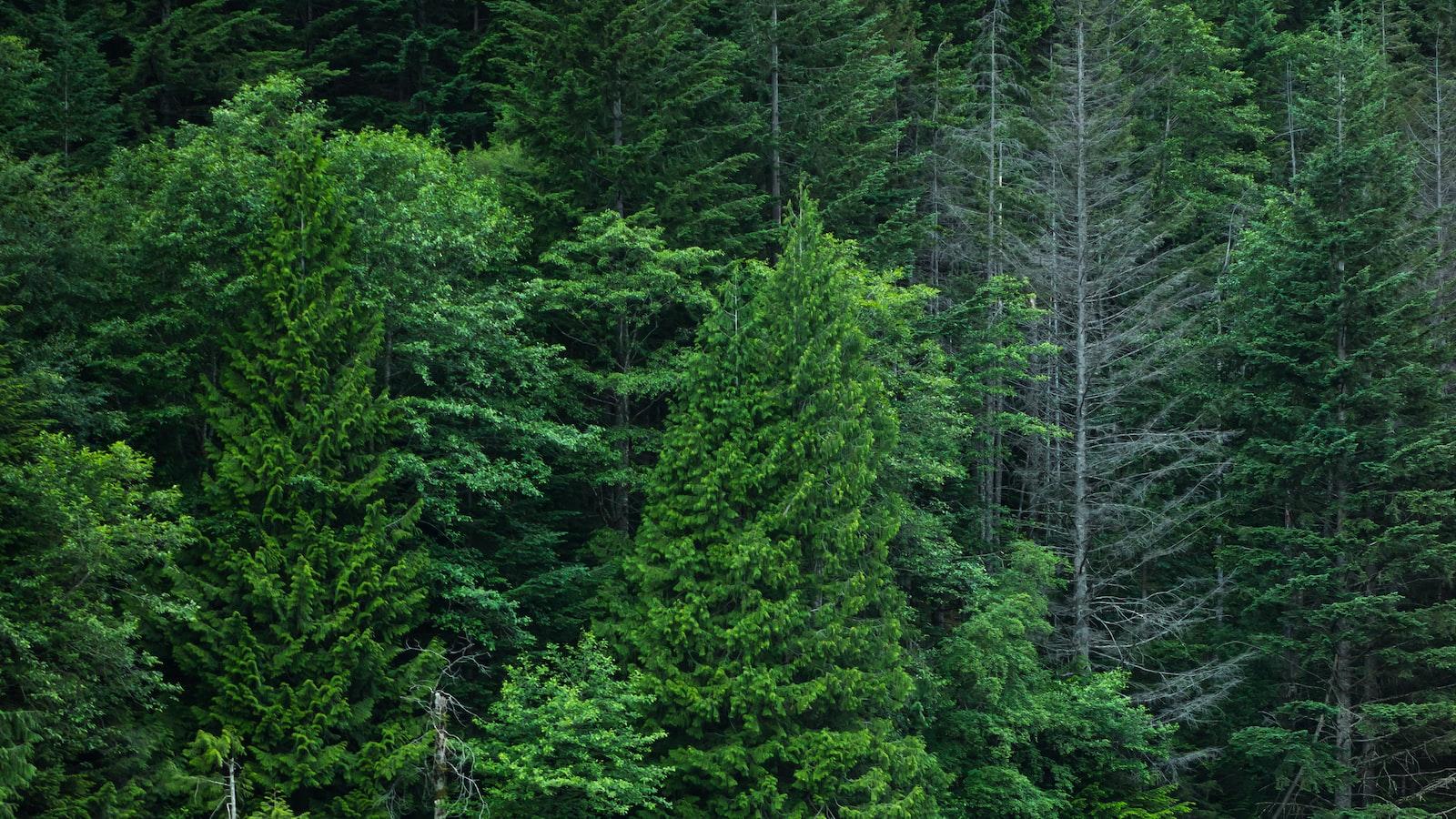
Benefits of for Health and Safety
Tree pruning is an essential practice that offers numerous benefits for the health and safety of both trees and humans. When done correctly, this process involves the careful removal of specific branches or stems to enhance the overall structure and appearance of the tree. Here are some key advantages of tree pruning:
- Promotes tree health: Pruning helps to eliminate dead or diseased branches, preventing the spread of infections and allowing the tree to allocate its resources more efficiently. By removing these damaged parts, the tree can focus its energy on new growth and healthy development.
- Enhances safety: Regular pruning helps to eliminate potential hazards, such as weak or overgrown branches that can pose a threat to people and property. By reducing the risk of falling branches during severe weather conditions, tree pruning ensures the safety of your surroundings.
- Improves aesthetics: Proper pruning enhances the visual appeal of trees, making them look more balanced and well-maintained. By shaping the tree’s canopy and removing excessive foliage, it creates a clean and aesthetically pleasing appearance, adding value to your landscape.
- Encourages fruit production: Pruning fruit trees stimulates the growth of flowers and fruits by removing old or non-productive branches. This allows sunlight and airflow to reach the inner sections of the tree, promoting optimal fruit development and improving overall yield.
- Prevents property damage: Overgrown branches can pose a significant risk to your property, especially during storms or strong winds. Pruning trees near buildings, power lines, and other structures helps to prevent potential damage caused by falling branches, reducing the need for costly repairs.
It is important to note that tree pruning should be carried out by skilled arborists or tree care professionals to ensure the best results. They possess the knowledge and expertise to employ proper pruning techniques while considering the unique needs of each tree species. Regular maintenance and scheduled pruning not only maintain the health and safety of your trees but also contribute to the overall beauty and value of your property.

Understanding the Different Techniques
Tree pruning is an essential aspect of tree care that helps maintain the health, aesthetics, and safety of trees. There are various techniques used when it comes to pruning trees, each serving a different purpose. Understanding these techniques can help you make informed decisions when it comes to the maintenance of your trees.
1. Crown Thinning: This technique involves selectively removing branches within the crown of the tree to improve air circulation and allow more light to penetrate through. It helps reduce wind resistance and the risk of tree failure during storms. Crown thinning also enhances the visual appeal of the tree by giving it a more balanced and lighter appearance. It is important to note that excessive crown thinning can weaken the tree and should be done carefully.
2. Crown Raising: Crown raising is the process of removing lower branches to provide clearance for various purposes, such as pedestrian or vehicular traffic, buildings, and views. This technique is commonly used in urban areas to maintain safe and aesthetically pleasing surroundings. Crown raising should be done gradually to ensure the tree’s overall health and stability.
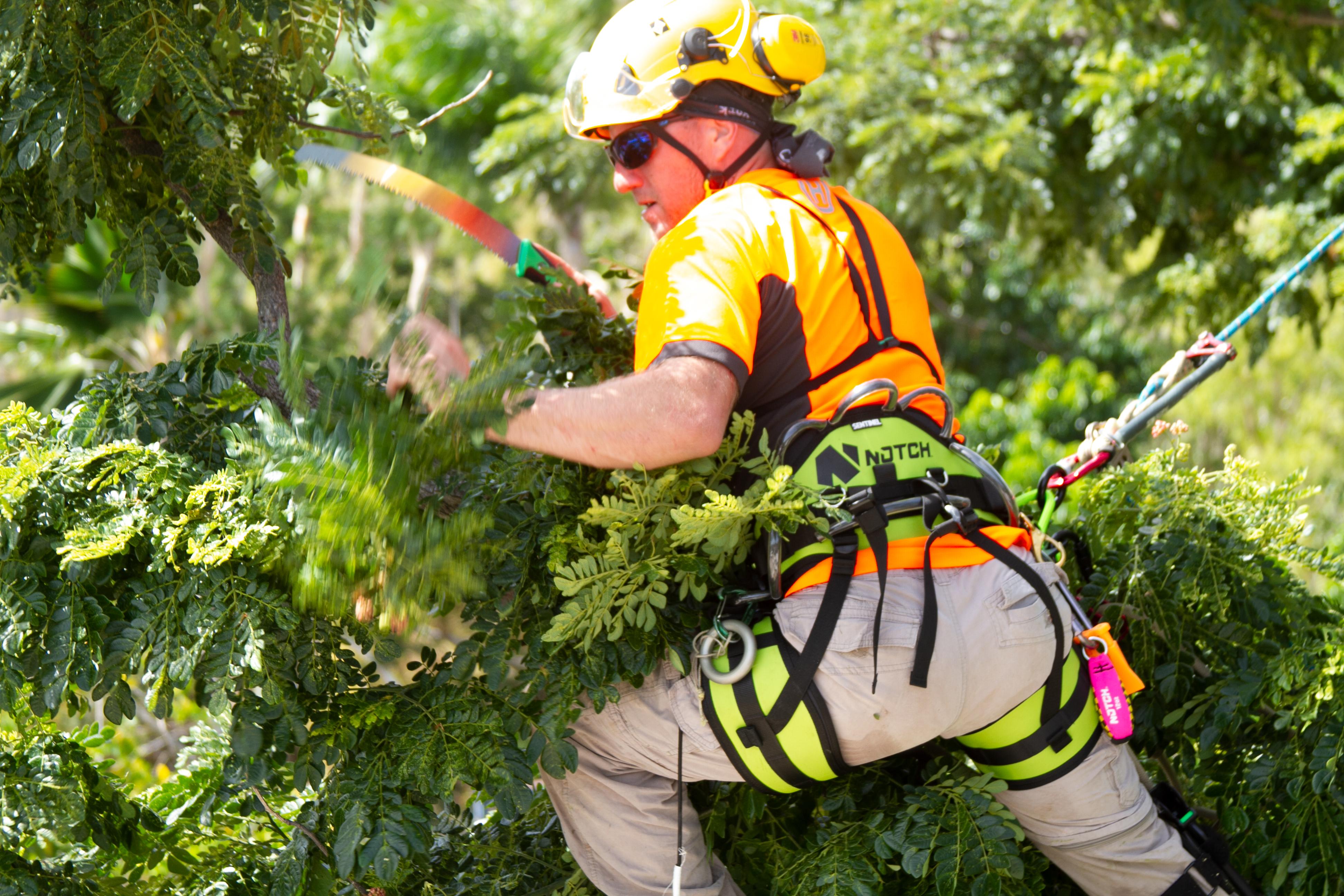
When to Prune Trees: Seasonal Considerations
Proper tree pruning is essential for maintaining the health and appearance of your trees. By understanding the best time to prune your trees, you can ensure optimal results. Seasonal considerations play a significant role in determining when to prune, as different tree species have specific needs.
Dormant pruning, which takes place during winter or early spring when trees are in a dormant state, is ideal for many tree species. This is because the absence of leaves during this time makes it easier to see the tree’s structure and identify any problematic branches. Additionally, pruning during dormancy reduces the risk of disease transmission, as many pests and diseases are less active during this period.
- In general, deciduous trees, such as maple, birch, and oak, should be pruned during late winter or very early spring before the trees start producing new growth. Pruning in late winter helps minimize the bleeding of sap.
- Evergreen trees, such as pine, spruce, and juniper, can be pruned anytime during the year, but it is best to avoid pruning during the late summer when they are more susceptible to stress.
- Flowering trees, such as cherry, magnolia, and dogwood, should be pruned immediately after they bloom to avoid interfering with the following year’s flower production.
It’s important to note that there may be exceptions for certain tree species, so it’s always a good idea to research specific guidelines for pruning the trees in your area. By following seasonal considerations and understanding the unique needs of your trees, you can ensure healthy growth, prevent potential damage, and maintain the beauty of your landscape.
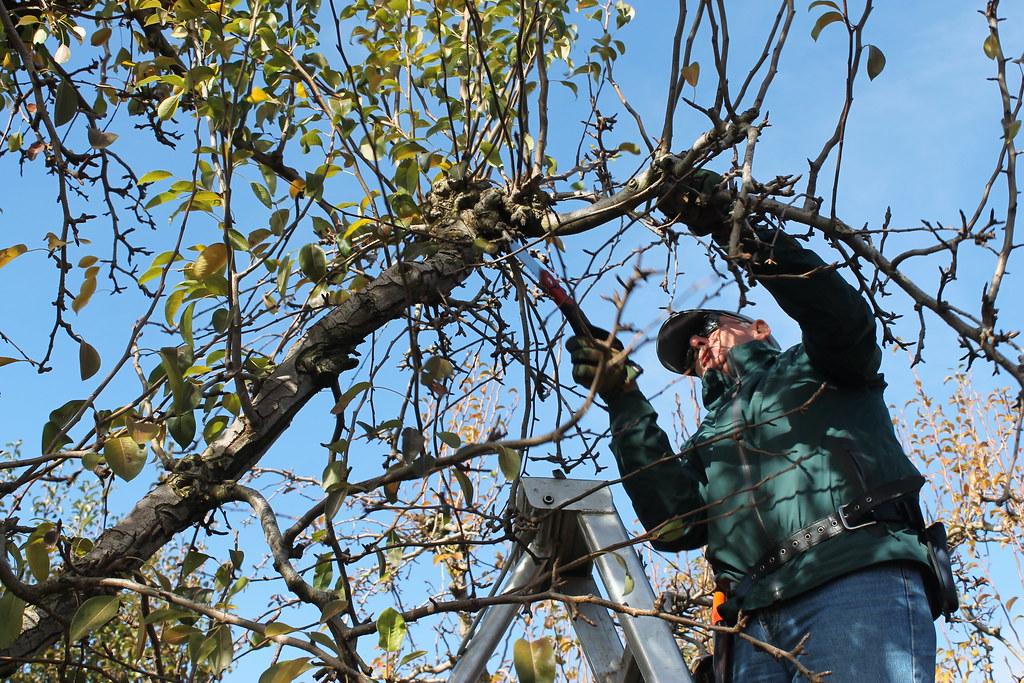
Essential Tools and Equipment for Effective
When it comes to tree pruning, having the right tools and equipment is crucial for ensuring effective and efficient results. Whether you are a professional arborist or a DIY enthusiast, these essential tools will help you achieve the desired outcome while maintaining the health and aesthetics of your trees.
1. Pruning Shears: Pruning shears, also known as hand pruners or secateurs, are a must-have tool for any tree pruning job. Designed to make precise cuts on smaller branches, they enable you to remove dead or diseased wood, shape the tree, and promote healthier growth. Look for shears with sharp, high-quality blades and comfortable handles for easy use.
2. Loppers: Loppers are similar to pruning shears but with longer handles and larger cutting blades. They are ideal for reaching higher branches and cutting through thicker wood. Loppers provide extra leverage, making it easier to prune trees with more strength and precision. Ensure you choose loppers with adjustable handles and replaceable blades for long-lasting performance.
3. Hand Saw: A hand saw is a versatile tool that allows you to cut through larger branches quickly and efficiently. It is especially useful when dealing with dead or damaged branches that are beyond the capacity of pruning shears or loppers. Look for a hand saw with a sharp blade, comfortable grip, and a folding feature for convenient storage and transport.
4. Pole Pruner: For pruning branches that are out of reach, a pole pruner is indispensable. This tool combines a pruning saw or lopper with a long extension pole, enabling you to trim tree limbs without the need for a ladder. Choose a pole pruner with a lightweight yet sturdy construction and an adjustable length pole for versatility.
5. Safety Gear: Prioritizing safety is crucial when engaging in tree pruning activities. Always wear protective gear such as gloves, safety glasses, and a helmet to shield yourself from potential hazards. Additionally, invest in a sturdy pair of boots with good traction to ensure stability and reduce the risk of slips or falls.
Remember, using the right tools and equipment not only makes tree pruning more efficient but also minimizes the risk of damage to both you and your trees. By incorporating these essential tools into your pruning routine, you can achieve optimal results while ensuring the health and longevity of your trees.
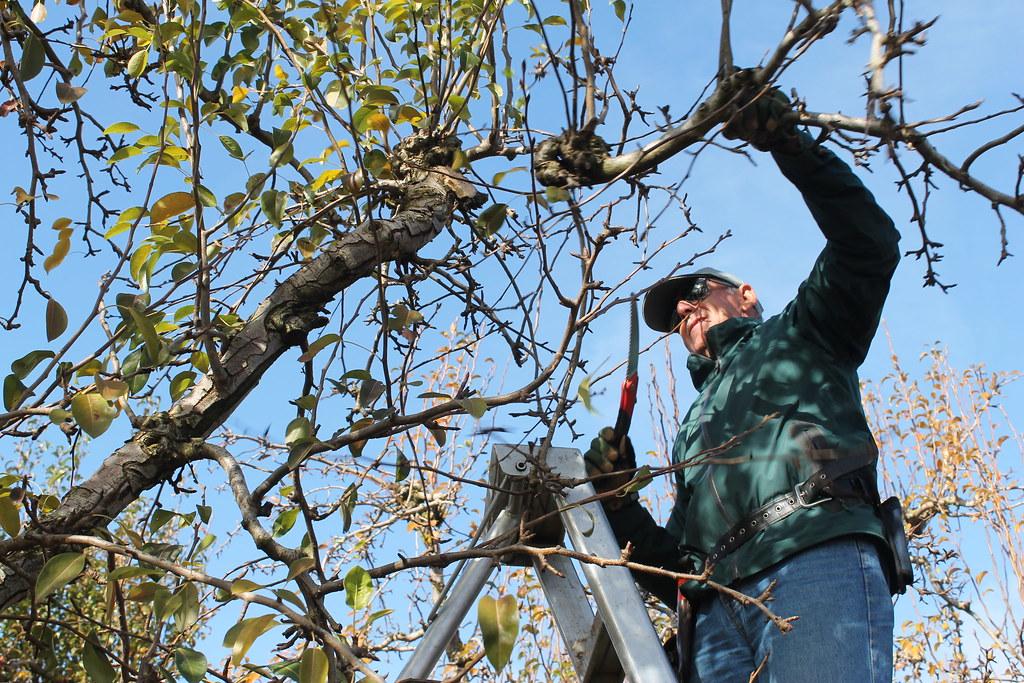
Step-by-Step Guide for Proper Techniques
Proper tree pruning is essential for maintaining the health and aesthetics of your trees. Whether you have a small backyard tree or a large landscape, following the correct pruning techniques can help your trees thrive. In this step-by-step guide, we will walk you through the process of tree pruning, from the tools you will need to the techniques you should use.
Tools:
- Pruning shears: Ideal for small branches and twigs.
- Lopping shears: Designed for thicker branches.
- Pruning saw: Useful for removing larger branches.
- Pole pruner: Great for reaching high branches without a ladder.
- Safety equipment: Gloves, safety glasses, and a hard hat.
Techniques:
- Start by removing any dead or broken branches. These can be potential hazards and negatively impact the tree’s overall health.
- Next, consider the shape and structure of the tree. Prune branches that cross over each other or those that are growing too closely to the main trunk.
- When pruning, make clean cuts just outside the branch collar (the swollen area where the branch attaches to the trunk). This helps the tree heal properly.
- Thin out crowded areas by selectively removing branches. This allows sunlight to penetrate and air to circulate through the tree, reducing the risk of disease.
- Finally, step back and assess your pruning work. Make sure the tree looks balanced and aesthetically pleasing.
By following these step-by-step pruning techniques, you can ensure the health and vitality of your trees while enhancing the overall appearance of your landscape. Remember, it’s essential to use the right tools and techniques to avoid unnecessary damage and promote proper tree growth. Happy pruning!
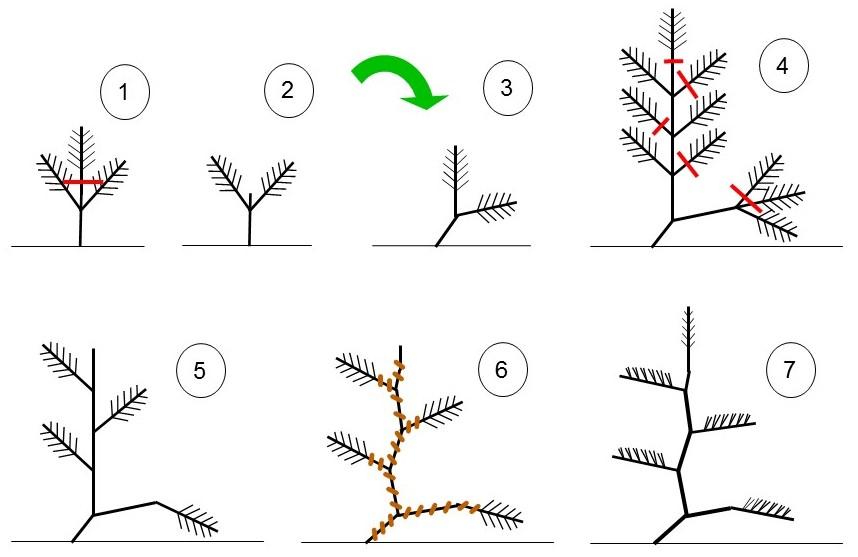
Common Mistakes to Avoid When Pruning Trees
Proper tree pruning is essential for promoting healthy growth and maintaining the safety and aesthetics of your landscape. However, there are several common mistakes that people often make when pruning their trees. By understanding and avoiding these mistakes, you can ensure that your tree pruning efforts are effective and beneficial for your trees.
One common mistake to avoid when pruning trees is known as topping. Topping involves removing the entire top portion of the tree, often to reduce its height. This practice not only ruins the natural shape and beauty of the tree but also weakens its structure. Topped trees are more susceptible to disease, insect infestations, and storm damage. Instead of topping, it is recommended to selectively prune branches back to healthy lateral growth points. This encourages proper growth and helps maintain the structure and integrity of the tree.
Another mistake to avoid is improper pruning cuts. When pruning, it is important to make clean cuts that are close to the branch collar, which is the swollen area at the base of the branch. Avoid leaving stubs or removing the branch collar, as this can hinder the tree’s ability to heal properly and increase the risk of decay and infection. Additionally, when removing larger branches, it is crucial to use proper pruning techniques such as three-cut method to prevent tearing or damaging the bark. This helps promote faster healing and reduces the risk of disease and pests.
In conclusion, when it comes to tree pruning, avoiding common mistakes is crucial for the health and longevity of your trees. By avoiding topping and improper pruning cuts, you can ensure that your trees remain strong, healthy, and visually appealing. Remember, it is always beneficial to consult a certified arborist for professional guidance and assistance with tree pruning. Proper pruning techniques combined with regular maintenance can greatly enhance the beauty and well-being of your trees.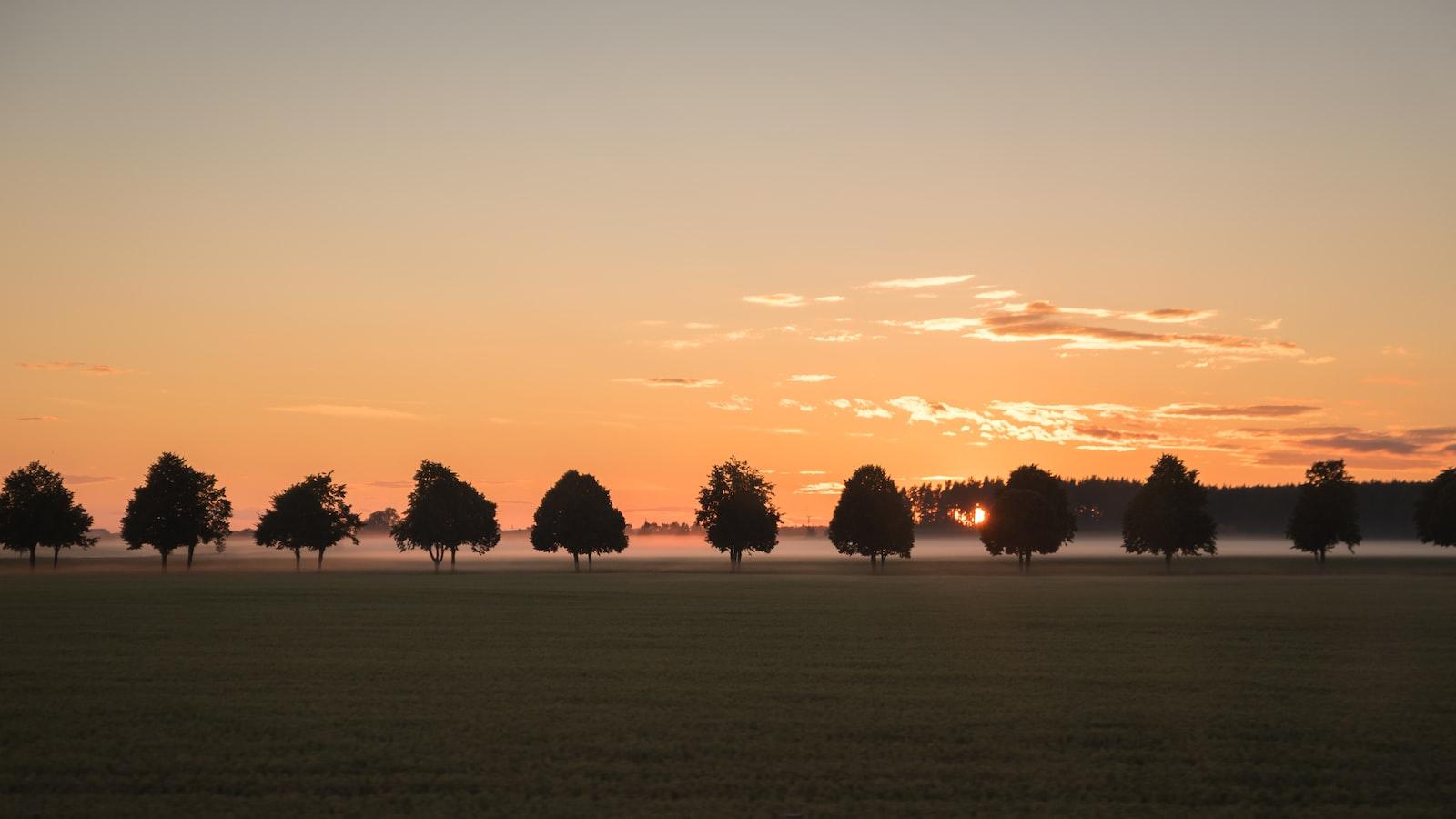
Important Safety Measures to Follow During
Tree pruning is an essential practice to maintain the health and aesthetics of your trees. Whether you are a professional arborist or a homeowner attempting to prune your own trees, it is crucial to prioritize safety. By following these important safety measures, you can ensure a smooth and accident-free pruning process:
- Wear Protective Gear: Before you start pruning, make sure to wear appropriate safety gear such as gloves, safety goggles, and a sturdy helmet. These will protect you from falling branches, flying debris, or any unexpected accidents.
- Use the Right Tools: Ensure that you have the necessary tools for tree pruning. Sharp pruning shears, loppers, and a pruning saw are some of the basic tools you need. Blunt or rusty tools can lead to accidents or improper cuts, causing damage to the tree.
- Inspect the Area: Before you begin pruning, carefully inspect the area around the tree. Look out for power lines, nearby structures, or anything that could pose a danger during the process. Keep a safe distance from these obstacles to avoid accidents.
Additionally, it is recommended to have a clear understanding of tree biology and proper pruning techniques. If you are unsure, it is best to consult with a professional arborist who can guide you through the process. Remember, prioritizing safety during tree pruning not only protects you but also ensures the well-being of the tree itself.
Q&A
Q: What is tree pruning?
A: Tree pruning refers to the selective removal of specific branches or parts of a tree. It is a common horticultural practice used to enhance the health, aesthetics, and safety of trees.
Q: Why is tree pruning important?
A: Tree pruning serves various important purposes. It helps maintain strong tree structure, promotes healthy growth, encourages better airflow, and allows sunlight to reach the inner branches. Pruning also helps improve tree aesthetics while minimizing safety risks by removing dead or hazardous branches.
Q: When is the best time to prune trees?
A: The ideal time to prune trees often depends on their species, but in general, late winter or early spring is the preferred period for most deciduous trees. Pruning during dormancy promotes vigorous growth in the following season. However, some trees, such as flowering ones, may require pruning after they bloom.
Q: Can I prune my trees at any time of the year?
A: While some light pruning, such as the removal of dead or damaged branches, can be done anytime, routine and heavier pruning should be carried out during the recommended time frame. Pruning at the wrong time may weaken the tree or impede its ability to recover.
Q: What are some common pruning techniques?
A: Depending on the desired outcome, various pruning techniques are employed. These include crown thinning, crown raising, crown reduction, and selective branch removal. Crown thinning involves the removal of certain branches to increase light penetration and reduce wind resistance. Crown raising focuses on elevating the lower branches of a tree, while crown reduction aims to reduce the overall size of the canopy.
Q: How should I prune a young tree?
A: Pruning young trees is crucial for establishing a well-balanced structure, but it requires careful attention. Start by removing any dead, diseased, or damaged branches. Avoid excessive pruning, as young trees need their foliage to produce energy through photosynthesis. Consult a professional arborist for guidance on shaping and training a young tree properly.
Q: Is tree pruning a DIY task or should I hire a professional?
A: Minor pruning tasks, such as the removal of small branches, can be safely carried out by homeowners. However, for larger trees or when dealing with heavy branches, it is advisable to hire a certified arborist. Professional tree care specialists have the necessary expertise, equipment, and safety protocols to ensure proper pruning and protect the health of the tree.
Q: Can pruning harm a tree?
A: When done correctly, pruning is generally beneficial for trees. However, improper pruning techniques or excessive removal of foliage can cause stress or damage to a tree. That’s why it is vital to understand the specific needs of your tree species and follow best pruning practices.
Q: Are there any legal restrictions on tree pruning?
A: Pruning laws and regulations may vary depending on your location and tree preservation ordinances. Some areas may require obtaining permits before pruning certain tree species, especially if they are protected or considered significant. It is advisable to consult local authorities or a professional arborist to ensure compliance with any necessary regulations.
Q: How often should trees be pruned?
A: The frequency of tree pruning largely depends on several factors, including species, age, and desired outcomes. While some trees may only require pruning every few years, others may benefit from annual or biennial pruning. Regular inspections by an arborist can help determine the appropriate pruning schedule based on the specific needs of your trees.
Conclusion
In conclusion, tree pruning is an essential technique for promoting the health and overall well-being of trees. As we have discussed, proper pruning can enhance a tree’s structural integrity, encourage optimal growth, and mitigate the risks of falling branches. By understanding the basic principles and techniques of tree pruning, homeowners and arborists alike can make informed decisions and perform the task effectively. Remember, when it comes to pruning, always prioritize safety, follow the industry standards, and consider seeking professional help when dealing with larger or more complex pruning projects. With these guidelines in mind, we hope you feel empowered to take care of your trees and create a safer and more beautiful environment. Happy pruning!
Simpsons Tree Services, Servicing Melbourne’s North Eastern Suburbs
Book a quote online at www.simpsonstrees.com.au

